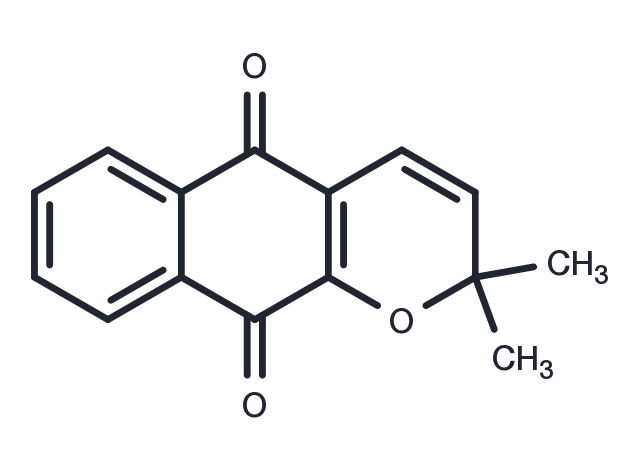store at low temperature
Powder: -20°C for 3 years | In solvent: -80°C for 1 year

Xyloidone (NSC-106453) exhibits antifungal activity and completely inhibits the mycelial growth of B. cinerea, Colletotrichum acutatum Simmonds, Colletotrichum gloeosporioides Simmonds, M. grisea, and Pythium ultimum Trow over a range of 0.4-33.3 mg/L.

| Pack Size | Availability | Price/USD | Quantity |
|---|---|---|---|
| 1 mg | In stock | $ 116.00 | |
| 5 mg | In stock | $ 269.00 | |
| 10 mg | In stock | $ 395.00 | |
| 25 mg | In stock | $ 659.00 | |
| 50 mg | In stock | Inquiry |

| Description | Xyloidone (NSC-106453) exhibits antifungal activity and completely inhibits the mycelial growth of B. cinerea, Colletotrichum acutatum Simmonds, Colletotrichum gloeosporioides Simmonds, M. grisea, and Pythium ultimum Trow over a range of 0.4-33.3 mg/L. |
| In vitro | Xyloidone controlls the development of rice blast, tomato late blight, wheat leaf rust, barley powdery mildew and red pepper anthracnose (Colletotrichum coccodes (Wallr) S Hughes). Xyloidone is particularly effective in suppressing red pepper anthracnose by 95% at a concentration of 125 mg/L[1]. |
| In vivo | Xyloidone inhibits vessel regeneration, interferes with vessel anastomosis, and limits plexus formation in zebrafish. Xyloidone induces vascular pruning and growth delay in orthotopic mammary tumors in mice. Xyloidone targets cell adhesion by promoting ubiquitination of the Rho-GTPase Rac1, which is frequently up-regulated in many different cancers[1]. |
| Synonyms | NSC-106453, NSC106453, Dehydro-α-lapachone, NSC 106453, Dehydrolapachone, NSC 629748 |
| Molecular Weight | 240.25 |
| Formula | C15H12O3 |
| CAS No. | 15297-92-4 |
store at low temperature
Powder: -20°C for 3 years | In solvent: -80°C for 1 year
DMSO: Soluble
You can also refer to dose conversion for different animals. More
bottom
Please see Inhibitor Handling Instructions for more frequently ask questions. Topics include: how to prepare stock solutions, how to store products, and cautions on cell-based assays & animal experiments, etc.
Xyloidone 15297-92-4 Microbiology/Virology Antifungal NSC-106453 NSC106453 NSC629748 Dehydro-α-lapachone NSC-629748 Dehydro-a-lapachone Dehydro-alpha-lapachone NSC 106453 Dehydrolapachone NSC 629748 inhibitor inhibit
